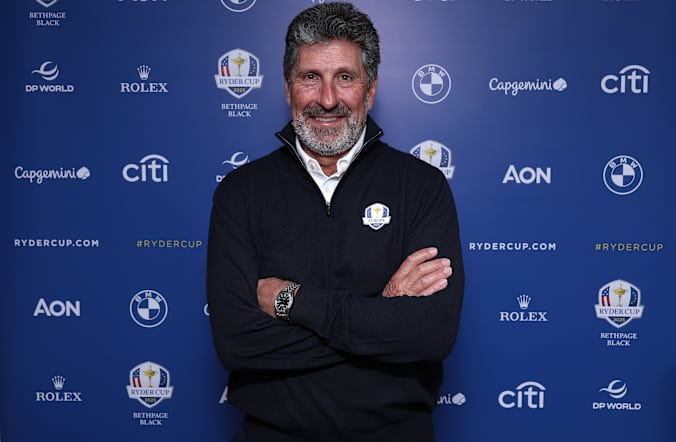
Ultimate Outcome Probability – Day 2
The second day of matches at the 43rd Ryder Cup provided plenty of drama, as the U.S. and European Teams traded birdies while the Americans extended their lead to 11-5. But the road to that score was hardly linear: there were comebacks and surprises, all of which help make the Ryder Cup special.
This year fans have an extra tool to help quantify those shifts of momentum. Created and developed by the Twenty First Group, fans can tap into the Ultimate Outcome Probability tool as part of match scoring at www.RyderCup.com/scoring. Each match is analyzed by a proprietary algorithm to determine both who has the advantage before the match and where that balance lies from hole to hole.
Here’s a look at how those probabilities changed during three key matches
Saturday:
Morning Foursomes: Jon Rahm/Sergio Garcia (Europe) def. Brooks Koepka/Daniel Berger (U.S.), 3 and 1
Perhaps no match this week has had bigger swings of momentum than the opener Saturday morning. The only European pairing to win a full point on the opening day, Rahm and Garcia began the match as slight favorites: 45.8% to 40.0%. But it was the Americans who got off to a fast start, winning each of the first three holes to increase their mathematical chances:
1 up through 1: 51.5%
2 up through 2: 68.0%
3 up through 3: 78.7%
Their probability topped out at 81.6% when Koepka and Berger held a 3-up lead through five holes before the Europeans came roaring back and won three of the next holes to tie the match. At that point they again regained the probability advantage (43.2% to 39.1%) for the first time in the match. When Garcia gave them their first actual led in the match, holing a birdie on No. 12, the European win percentage rose to 63.2% and didn’t dip below 65% the rest of the way. They closed out the win on No. 17, a victory they had just a 10.2% chance of pulling off after the first five holes.
Morning Foursomes: Justin Thomas/Jordan Spieth (U.S.) def. Viktor Hovland/Bernd Wiesberger (Europe), 2 up
This was another instance where a team erased a 3-up lead en route to a comeback victory. The Americans were clear favorites at the outset of the match, expected to win 51.0% of the time against just 35.9% for the European rookies. But when Hovland and Wiesberger won three of the first five holes, they moved to 79.9% while Spieth and Thomas were given just a 10.4% chance of winning the match.
The U.S. comeback began on the very next hole, as the Americans won three of the next four to tie the match and regain the (mathematical) upper hand, 44.7% to 36.0%. But Hovland and Wiesberger quickly regained the lead, and heading to the 14th hole the Europeans had a 57.3% chance to earn a full point.
The Americans then won the next three holes to flip the script and improbably take control of a match that they had a roughly 1-in-5 chance of winning a few holes prior:
1 down through 13: 20.7%
Tied through 14: 40.4%
1 up through 15: 68.2%
2 up through 16: 94.0%
Afternoon Four-Balls: Scottie Scheffler/Bryson DeChambeau (U.S.) def. Tommy Fleetwood/Viktor Hovland (Europe), 3 and 1
In each of the other three matches in the afternoon session, whichever side took the first lead of the match never trailed the rest of the way en route to victory. But this match featured the most back-and-forth action, with the Americans snagging a full point with a torrid close.
Scheffler and DeChambeau began the match as the favored side, with a 50.9% chance to win against just 37.0% for the Europeans. But Hovland put up an early birdie to give his pair an edge, and after four holes those percentages had nearly flipped (50.8% for Europe against 34.3% for the Americans). Scheffler and DeChambeau held a 62.7% probability after building a 1-up lead through seven holes, but that advantage was short-lived as the Europeans took each of the next two holes to sit at 1 up (and 53.9%) at the turn. They were still listed at 57.0% holding that 1-up advantage with five holes to go.
But the Americans closed with a flourish, winning each of the next four holes to close out the final point of the session.
Here’s how the American percentages shifted in that stretch, as Scheffler and DeChambeau delivered an important but unexpected point:
1 down through 13: 22.1%
Tied through 14: 41.0%
1 up through 15: 67.6%
2 up through 16: 93.3%



